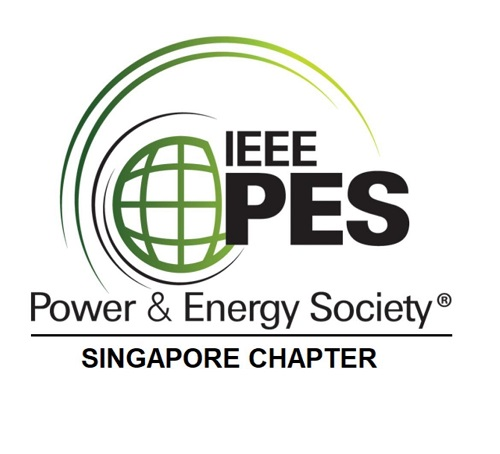Call for Papers
is Now Closed
The CEPSI 2025 Call for Papers is now officially closed. Thank you to all who submitted an abstract! Acceptance notifications will be sent by 17 March 2025. Best of luck!
Marking a quarter of the way into the century, 2025 stands at the crossroads as the world confronts the reality of peak emissions and evaluates its progress towards global energy and sustainability targets.
Electricity remains the backbone of sustainable development and economic growth, fuelled by the rapid adoption of renewable energy, cutting-edge technologies, and strengthened regional collaboration. The region must navigate the complexities of integrating renewable energy, modernising infrastructure, and fostering regional energy collaboration, while ensuring equitable access and addressing climate demands.
CEPSI 2025 is built around the concept of aligning ambition with action, offering a structured narrative that reviews achievements, addresses pressing challenges, and offers actionable pathways to accelerate progress while strengthening stakeholder collaboration.

Authors of selected papers will present their work at the Technical Sessions during CEPSI 2025, with the full papers included in the official conference proceedings. Supported by the IEEE PES Singapore Chapter, these session will provide a valuable platform for presenting original research, sharing practical experiences, and discussing strategies to tackle key issues in the energy sector.
Important Dates:
9 March 2025
Abstract Submission Deadline (EXTENDED)
17 March 2025
Abstract Acceptance Notification
15 April 2025
Full Paper Submission Deadline
31 July 2025
Final Paper Submission Deadline
Technical Tracks:
|
A.1 |
Advanced Monitoring and Maintenance for Power Equipment |
|
A.2 |
Digital Solutions for Diagnostics and Maintenance |
|
A.3 |
High Voltage Direct Current (HVDC) Systems |
|
A.4 |
Flexible AC/DC Transmission Systems (FACTS and FDCTS) |
|
A.5 |
Underground Transmission & Distribution Networks and Substations |
|
A.6 |
Managing Ageing Infrastructure |
|
A.7 |
Power Flow Control and Dynamic Equipment Ratings |
|
A.8 |
Addressing Network Congestion |
|
A.9 |
Workforce and Knowledge Management in Energy Sector |
|
C.1 |
Energy and Distribution Management Systems (EMS, DMS, SCADA) & Data Analytics |
|
C.2 |
Smart Grid and Microgrid Applications and Technologies |
|
C.3 |
Power Plant Digitalisation, Automation, and Cybersecurity |
|
C.4 |
Integrated, Self-Healing Systems |
|
C.5 |
Smart Buildings and Low-Carbon Infrastructure |
|
C.6 |
Smart Metering and Advanced Metering Infrastructure (AMI) |
|
C.7 |
Electric Vehicles (EVs), Charging Infrastructure, and Vehicle-to-Grid (V2G) Technologies |
|
C.8 |
Microgrid Design, Operation, and Control |
|
C.9 |
Demand Response (Demand Side Management) and Flexible Load Management |
|
C.10 |
Renewable Integration and Grid Compatibility |
|
E.1 |
Emerging Technologies and Industry 4.0 in the Power Sector |
|
E.2 |
ICT Innovations in Corporate Management |
|
E.3 |
Telecommunications and Cybersecurity for Critical Infrastructure |
|
E.4 |
Digital Utilities and the Internet of Things (IoT) |
|
E.5 |
Artificial Intelligence (AI) and Large Language Models (LLMs) |
|
E.6 |
Digital Twins for Energy Systems |
|
E.7 |
Virtual Reality (VR) and Augmented Reality (AR) |
|
E.8 |
Blockchain and Decentralised Data Management |
|
B.1 |
Low-Carbon Energy Production and Carbon Capture |
|
B.2 |
Emerging Energy Generation Technologies |
|
B.3 |
Energy Efficiency and Conservation Technologies |
|
B.4 |
Electrification and Electricity Replacement Solutions |
|
B.5 |
Advanced Energy Storage Solutions |
|
B.6 |
Decarbonisation Technologies for Power Grids |
|
B.7 |
Circular Economy and Sustainable Material Use |
|
B.8 |
Green Hydrogen, Fuel Cells, and Distributed Energy Resources (DER) |
|
D.1 |
Customer-Side Energy Efficiency Management |
|
D.2 |
Demand Response and Customer Interaction |
|
D.3 |
Innovation in Retail Electricity and Customer Services |
|
D.4 |
Integrated Customer Energy Management Solutions |
|
D.5 |
Decentralised and Peer-to-Peer (P2P) Energy Trading |
|
F.1 |
Cross-Border Power Interconnection and Power Trading |
|
F.2 |
Power Generation Planning and Energy Transition Goals |
|
F.3 |
Integration of High Shares of Variable Renewable Energy (VRE) |
|
F.4 |
Flexibility Requirements and Solutions for Enhanced Grid Flexibility |
|
F.5 |
Decentralised and Distributed Energy Systems (VPP) |
|
F.6 |
Sustainable Power Financing and Policy |
|
F.7 |
Environmental and Social Impacts of Renewable Power Development |
Abstract Submission Guidelines
* Submissions that do not meet the format requirements will be rejected.
- Title:
- • Must be concise and reflect the abstract's content.
- • The first letter should be capitalised.
- • Maximum length: 30 words.
- Authors:
- • Provide full names, including surnames, for all authors.
- • Do not include academic degrees or titles.
- • Please mark the corresponding author with an asterisk (*).
- Affiliations:
- • Include only the institution's name.
- • Do not list departments or street addresses.
- • Each author can list up to two affiliations.
- Contents:
- • The abstract body must not exceed 500 words.
- • Abstracts must be written in English.
- References:
- • Limit references to a maximum of five.
- • References are included in the 500-word limit.
How to Submit
- 1. Submission Portal
- • Only electronic submissions by the author through the CMT3 Portal will be accepted.
- 1. To register or log in to your account, please visit: https://cmt3.research.microsoft.com/CEPSI2025/
- - Your CMT3 account must be created using your affiliation email address (e.g., institutional or company email)
- - Submissions with incorrect email formats will be rejected immediately.
- • All abstracts must be submitted by 9 March 2025, 23:59 (GMT+8, Singapore Time).
- 1. To register or log in to your account, please visit: https://cmt3.research.microsoft.com/CEPSI2025/
- • Only electronic submissions by the author through the CMT3 Portal will be accepted.
- 2. Notification and next steps
- • Successful authors will be invited to submit a full paper by 17 March 2025.
- 3. About the CMT Portal
- • The Microsoft CMT service was used for managing the peer-reviewing process for this conference. This service was provided for free by Microsoft and they bore all expenses, including costs for Azure cloud services as well as for software development and support.
- i) For more details on requesting or managing a conference, see HOW-TO: Request a Conference
- ii) For more guidance on the submission process, please refer to the official CMT documentation: HOW-TO: Author Submission
Contact and Support
For inquiries regarding the abstract submission process, please contact: submissionsupport@aesieap.com




